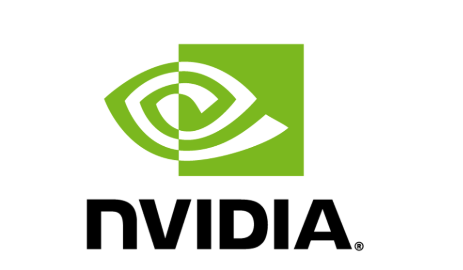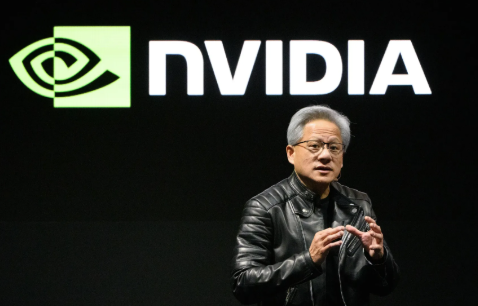
In a groundbreaking collaboration, the University of Hong Kong (HKU) and NVIDIA have unveiled a revolutionary autonomous driving system called Centaur. For the first time, this system incorporates Test-Time Training (TTT) into an end-to-end self-driving framework. By leveraging Cluster Entropy to dynamically adjust model weights, Centaur achieved a Performance Driving Metric Score (PDMS) of 92.6%, a figure that is strikingly close to human driving performance.
This innovation not only pushes the boundaries of AI tools in autonomous driving but also raises critical debates: Can AI tools truly surpass human drivers? What are the implications of such advancements for the future of transportation? Let’s break it all down.
What Makes Centaur So Revolutionary?

Centaur’s standout feature is its integration of Test-Time Training (TTT) into autonomous driving. This novel approach challenges the traditional “train-then-test” paradigm by allowing AI models to continue learning and adapting during real-world testing. Combined with Cluster Entropy, which dynamically adjusts model weights, Centaur offers unparalleled flexibility and precision in handling complex driving environments.
1. Test-Time Training (TTT): Real-Time Learning for Real-World Challenges
Traditional autonomous driving systems are trained in controlled environments and then deployed for testing in unpredictable real-world scenarios. This separation often leads to performance gaps, as the AI struggles to adapt to unforeseen situations such as sudden weather changes, varying road conditions, or erratic human behavior.
TTT bridges this gap by enabling the AI to continue learning and optimizing during the testing phase. For example, if the system was trained in sunny conditions but encounters rain during operation, TTT allows it to quickly adapt to the wet roads and reduced visibility. This real-time adaptability significantly enhances the system’s robustness and reliability.
2. Cluster Entropy: Dynamic Weight Adjustment for Smarter Decisions
Centaur also introduces Cluster Entropy, a mechanism that dynamically adjusts the model’s weight distribution based on the driving context. In simple terms, this means the system can prioritize the most relevant factors in a given situation.
For instance:
On a congested urban street, the system might focus on tracking pedestrians, cyclists, and nearby vehicles.
On a highway, it could shift its attention to lane markings, vehicle speeds, and merging traffic.
This dynamic adaptability ensures that Centaur makes smarter, context-aware decisions, significantly improving its overall performance.
3. Performance Driving Metric Score (PDMS): Closing the Gap with Human Drivers
To evaluate Centaur’s capabilities, researchers used the Performance Driving Metric Score (PDMS), which combines key metrics like safety, efficiency, and stability. Centaur’s PDMS of 92.6% is not only a record for AI-driven systems but also places it within striking distance of human driving performance. This breakthrough suggests that AI tools like Centaur are rapidly approaching—and potentially surpassing—the capabilities of human drivers.
The Controversy: Can AI Tools Truly Replace Human Drivers?
While Centaur’s achievements are undeniably impressive, they also reignite an age-old debate: Can AI tools fully replace human drivers? The answer is far from straightforward, as the discussion hinges on several critical factors.
1. The Case for AI: Safer, Smarter, and More Efficient
Proponents of AI-driven systems argue that they offer numerous advantages over human drivers:
No fatigue or distractions: Unlike humans, AI doesn’t suffer from tiredness, road rage, or texting-induced distractions.
Split-second decision-making: AI can process vast amounts of data in milliseconds, enabling faster and more precise reactions.
Reduced accidents: Studies show that human error is the leading cause of traffic accidents. AI tools, with their strict adherence to rules and real-time optimization, could dramatically reduce these risks.
2. The Limitations of AI: Ethics, Adaptability, and Trust
Critics, however, point out several challenges that AI tools have yet to overcome:
Ethical dilemmas: How should an AI system respond in a no-win scenario, such as choosing between hitting a pedestrian or crashing the car?
Extreme scenarios: While Centaur excels in controlled tests, real-world driving often involves unpredictable events like road collapses, sudden wildlife crossings, or malfunctioning traffic lights.
Public trust: Many people remain skeptical about entrusting their lives to a machine, especially in high-stakes situations like driving.
Centaur’s Potential Applications
Despite the ongoing debates, Centaur’s potential applications are vast and transformative. Here are a few scenarios where this technology could make a significant impact:
1. Smarter Urban Traffic Management
By integrating with smart city infrastructure, Centaur could help optimize traffic flow, reduce congestion, and lower emissions. For instance, it could dynamically reroute vehicles to avoid traffic jams, improving overall urban mobility.
2. Autonomous Ride-Sharing Services
With its high PDMS, Centaur is an ideal candidate for autonomous ride-sharing fleets. Imagine hailing a self-driving taxi that offers human-level driving performance—convenient, efficient, and cost-effective.
3. Specialized Driving Scenarios
Centaur’s adaptability makes it well-suited for challenging environments like mining sites, agricultural fields, or disaster zones. In these scenarios, AI-driven vehicles can perform tasks that are too dangerous or complex for humans.
Global Impact and Industry Reactions
The unveiling of Centaur has sent shockwaves through the tech and automotive industries. Companies like Tesla, Waymo, and Cruise are reportedly exploring ways to incorporate similar TTT methodologies into their systems. Meanwhile, governments worldwide are racing to update regulations to accommodate these rapidly advancing AI tools.
What Does This Mean for Everyday Drivers?
For everyday users, Centaur’s advancements could bring both opportunities and challenges:
Enhanced safety: AI-driven systems could significantly reduce traffic accidents, making roads safer for everyone.
Greater convenience: Autonomous ride-sharing and delivery services could become more accessible and affordable.
Trust issues: Many drivers may struggle to relinquish control to an AI system, especially in life-and-death situations.
Conclusion: The Road Ahead for Centaur and AI Tools
HKU and NVIDIA’s Centaur system represents a monumental leap forward in autonomous driving technology. By integrating Test-Time Training and Cluster Entropy, it has set a new benchmark for AI tools in the automotive sector. However, replacing human drivers entirely will require more than technological advancements—it will demand solutions to ethical dilemmas, extreme scenarios, and public trust issues.
As we move toward a future where AI tools play an increasingly central role in our lives, Centaur reminds us of both the incredible potential and the complex challenges of this transformative technology. Whether it becomes the gold standard for autonomous driving or simply a stepping stone to even greater innovations, one thing is clear: the journey has only just begun.
See More Content about AI tools
